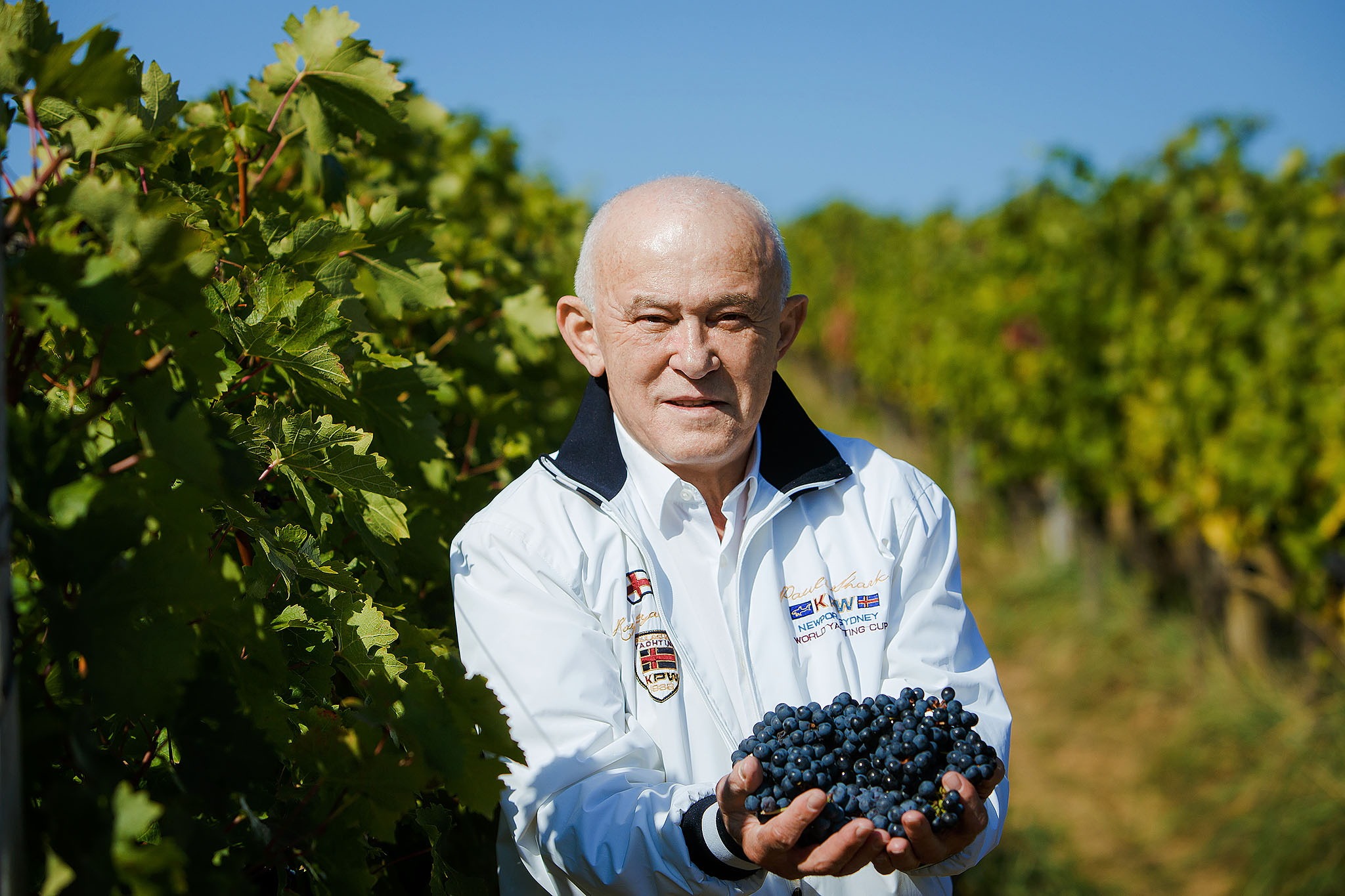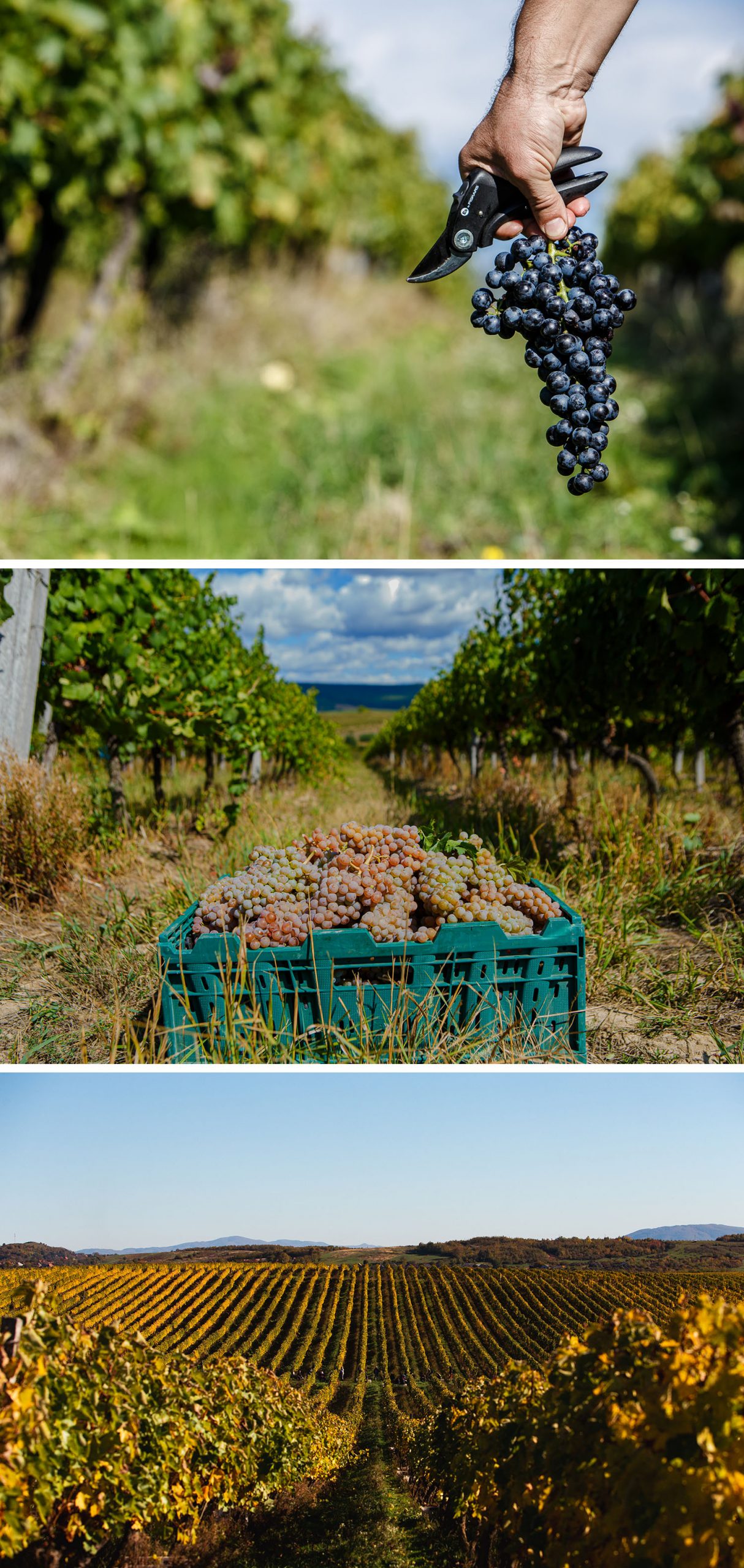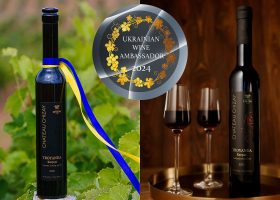
Posted: 30.07.2024
272 hectares of dreams. Hugo Gutman on the establishment of Chateau Chizay vineyards
18 years. The age when a person officially becomes an adult. 18 years of vines – the time when the grapes enter their best period. This year, the vineyards of Chateau Chizay are coming of age. They were planted in 2006, marking a significant moment for winemaking in Zakarpattia and all of Ukraine. On this occasion, we share the story of an event that was born from a grand dream and about the vineyards that are a gem and one of the symbols of Zakarpattia – the vineyards of Chateau Chizay. These are 272 hectares – about 1 million 100 thousand grape bushes, corresponding to the population of Zakarpattia. The founder and owner of Chateau Chizay, Hugo Gutman, shares the origins of this endeavor and how the vineyards were planted. These are the words of the person who brought this dream to life and continues to do so.
Dream
“Great deeds grow from great dreams. Perhaps even from crazy ones. When I first envisioned creating a winery in the early 1990s, it seemed close to madness. There were no preconditions for this in Ukraine, and especially in our Zakarpattia, primarily from an economic standpoint.
The vineyards, which have been ‘written into the DNA’ of the region for centuries (historical evidence shows that winemaking in our area dates back at least 2,000 years), were in decline. The winemaking enterprises were either ruined or looted. And those that were still barely surviving unfortunately did not offer hope for a new blossoming of the industry. But that’s precisely why it became a dream, perhaps even a Dream. Zakarpattia is a winemaking region of Europe; it should be. So, you could say, I aimed to restore historical justice.
Frankly, even my closest ones didn’t believe in this idea back then. The state of affairs was too difficult, and the goal was too ambitious. But I started. And in 1995, Chateau Chizay became the first private winery in Ukraine, created from scratch, not on the remnants of Soviet-era enterprises. In 1997, the first bottle of wine was bottled at the site of the former wasteland where the enterprise was built”.


The 1990s and Early 2000s: A Different Chateau Chizay
“In the 1990s and early 2000s, Chateau Chizay was a completely different company than it is now. We bought grapes wherever we could find them, from Moldova to Macedonia, as well as in our southern regions. We made a lot of wine, with a wide variety. At the same time, I understood: if the goal was indeed that Dream, we had to make truly high-quality and special wine, and the path to this lay through… That’s right, our own vineyards.
Only in this way, by having our own raw materials, can we control our product, creating it entirely – from the vine (even the soil!) to the glass. Only then can we truly talk about Zakarpattian wine, which tells people about our region. It is important for us to create wine with its own character. Without pretension and simply as a fact – unique. Specialists also call this terroir.
Wise people say: when you start something big, don’t look down at your feet, but up at the sky. I listened. And I dared…”
Work
“In the spring of 2006, legends began to spread about our company. People recounted that they had seen the layout of the future vineyards being done with laser precision and that young grape bushes were being planted by a super-modern combine…
This was preceded by a long preparation period. Titan-like work – from formalizing land relations, analyzing soil and climatic conditions of microzones (we studied these data for decades!), to preparing the plots for planting.
Before choosing the seedlings, we took soil samples to Austrian specialists. They provided detailed recommendations – which plots were best for which varieties, which rootstocks to use and where, how to choose the vineyard’s exposure, and how to fertilize the soil…
Having determined the varieties with international consultants, we searched for seedlings in Europe because the vines that could be purchased in southern Ukraine from colleagues who had not given up and continued working in the difficult circumstances of those times were not suitable for our climatic conditions, which are closer to the Tokaj region and some terroirs in Austria and even Germany.
So, the choice fell on Austria, specifically the reputable nursery “Rebschule Tschida,” which supplied the seedlings and carried out the planting together with our specialists. We chose European classics (Cabernet Sauvignon, Pinot Noir, Merlot, Rieslings…) and varieties that were probably only known to veteran grape growers in Ukraine at the time: Chersegi Fuszeres, Blaufränkisch, Furmint. The story about Traminer is worth a separate tale, where the key word is ‘Troyanda.’
Thanks to the wise professionals and intuition, we focused not only on aromatic white varieties (which are truly characteristic of the Zakarpattia terroir and are our flagship) but also planted classic European reds. There were risks, but due to climate change, they now ripen well. The 2018 harvest surprised even us, and today these are collectible wines”.

Gratitude and Responsibility
“We must thank all the people whose dedication made this possible. Among them is the agronomist Vasyl Roman, to whom we owe the transformation of the bushes in the Mala Hora tract into the most beautiful vineyard. And my like-minded colleague Anatoliy Poloskov, who then served as the director of Chateau Chizay for over 20 years. He managed the planting of the vineyards.
It was organized so well that the Mala Hora massif was planted – it’s still hard to believe – in just four days. This became an event in Zakarpattia and in the entire Ukrainian viticulture industry!
Later, the team led by Anatoliy Poloskov, armed with valuable experience and technologies we invested in, helped establish vineyards in many regions of Ukraine. Over a thousand hectares!
I am confident: we, the grape growers and winemakers of Ukraine, are not competitors but colleagues, and often friends. We share a common goal – to develop the industry. And today, it can already be said that Ukrainian wine is gaining respect. Surprisingly, this process is happening more rapidly abroad than at home. But I still believe that Ukrainians will appreciate their own, native products. This too is part of this great dream”.
Responsibility
“It’s not enough to plant a vineyard. It’s like having a child – bringing them into the world means you’re forever responsible, your heart is forever with them, no matter how many years pass. For us, it means not missing any of the stages of caring for the vines. Otherwise, all the work and time already devoted to them would be wasted.
This is literally a daily job (yes, even in winter), constant investments (and very serious ones), and constant concerns. Every year, every season is different.
There have been times when we had to leave part of the grapes on the vines because we couldn’t harvest and process them on time. There were times when we took risks and won, like with the late harvest of Furmint, and now Furmint Late Harvest is our ‘star’.
You can only harvest from the vine once a year, and all the rest of the time, you’re working for it. And I am infinitely grateful to our team. They are patriots. Without genuine love for the work, it’s impossible to maintain the pace and responsibility for every step. I warmly embrace everyone who works to make this great dream come true. And I’m happy that this has become not only the work of my life but also a part of the destinies of other people. In fact, it has become a part of the entire Zakarpattia region and Ukrainian winemaking.
It seems we’ve really created something beautiful – just look at these landscapes. I feel like I know all these views perfectly, every slope, almost every vine, but every time I see them, I’m as joyful as the first time.
Tomorrow, I’ll climb to the top of the vineyard again to check on the condition of the vines. Will I be happy? Yes, because it’s very beautiful there.
But I’ll also pay attention to all the details, think about the condition of each plot, the work that needs to be done this and next week, the condition of the bushes of this and that variety, what’s going on with the tractor, and, inevitably, the price of fuel.
I’ll call my viticulture director Hennadiy Vachilia and ask if he’s doing everything to avoid heatstroke in this heat. We’ll discuss the season’s forecast and what the future harvest promises us, think about how to accumulate all the forces and resources for the harvest, and another dozen questions.
What is this to me? It’s a dream, the fulfillment of which continues.
Be good!”
Similar news
 Full set of medals at Ukraine Wine & Spirits Awards – 2024, including gold for an upcoming release
Full set of medals at Ukraine Wine & Spirits Awards – 2024, including gold for an upcoming release
 A miracle from Traminer – the wine that became a legend. Presenting the Collection Wine: “Troyanda Karpat” vintage 2017
A miracle from Traminer – the wine that became a legend. Presenting the Collection Wine: “Troyanda Karpat” vintage 2017

